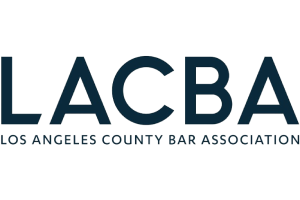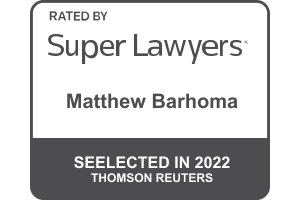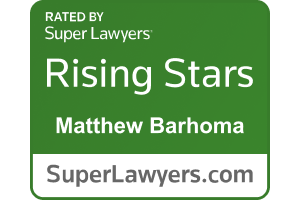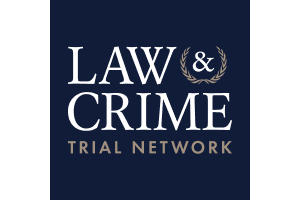- Free Consultation: (888) 808-2179 Tap Here to Call Us
California Racial Justice Act (PC § 745): A Step-by-Step Guide to Winning Relief
If race, ethnicity, or national origin touched any part of an investigation, charging decision, trial, or sentence, the California Racial Justice Act (RJA) can open the door to dismissal, a new trial, charge reduction, or resentencing. Consult with a Racial Justice Act Lawyer promptly to evaluate your case. This guide explains how the law works, who qualifies, when to file, and how successful petitions are built in Los Angeles County, Orange County, Riverside County, San Bernardino County, San Diego County and across California.
Call 888-808-2179 or submit a confidential online inquiry. A short conversation can determine eligibility and timing before critical windows close.
What Is The California Racial Justice Act—And Why It’s Different
The Racial Justice Act, codified at Penal Code § 745 and expanded by AB 256 (“Racial Justice for All”), prohibits convictions or sentences that were sought, obtained, or imposed based on race, ethnicity, or national origin. What makes it transformative is its recognition that discrimination is often systemic, pattern-based, and implicit—not only overt.
Under the RJA, courts can consider data, patterns, and indirect proof—not just smoking-gun statements. That means you may not need a blatant slur to win. Where the numbers and facts point to disparate treatment, the Act provides real remedies.
How The RJA Applies In Real Life
The Act reaches the entire criminal process. That includes:
- Policing and charging decisions (who gets arrested, what gets filed, whether enhancements are added).
- Jury selection and courtroom conduct (peremptory strikes, comments inside or outside court).
- Plea bargaining and sentencing outcomes (who gets leniency—and who doesn’t—for the same conduct).
- Post-conviction review (vacating old judgments or resentencing to remove racially tainted outcomes).
Bottom line: if racial bias—explicit, implicit, or systemic—touched your case, the court must fix it.
Who Is Eligible To File (And When)
California staged retroactivity so people could seek relief in an orderly way. In practical terms:
- Now: People with felony convictions after 2015 may pursue relief even if they are no longer in custody; and anyone still incarcerated on a felony can file (including much older cases).
- Beginning January 1, 2026: All felony convictions and juvenile adjudications—no matter how old—are eligible for review.
If your loved one is incarcerated now, or if you have a felony after 2015, you can move forward today. If you pled years ago because you felt boxed in, or enhancements were piled on you in a way others didn’t face, the RJA may unlock a different result.
Questions about timing? Call 888-808-2179. We’ll confirm your case and whether you can file now or whether we should position your case for the next eligibility tier.
What You Have To Prove (And What You Don’t)
To win, you do not have to prove overt, intentional racism by a specific actor. Instead, you can establish a violation if any of the following apply:
- Racist or discriminatory language or bias by a judge, prosecutor, defense attorney, law-enforcement officer, expert, or juror (in or out of court).
- Disparate charging or conviction severity against your racial/ethnic group compared to similarly situated people of other groups in the same jurisdiction.
- Harsher sentence for your racial/ethnic group compared to similarly situated defendants of other groups in the same jurisdiction.
- Patterns of disparate enhancements or punishments tied to race or national origin, including how victims’ and defendants’ racial identities correlated with sentence severity.
The standard is preponderance of the evidence—more likely than not. In practice, that means good data and a strong comparator analysis can carry the day, even where no one said the quiet part out loud.
Remedies The Court Can Order
If the court finds an RJA violation, it must fashion relief to remove the taint. Depending on the stage of your case, remedies can include:
- Dismissal of charges or specific counts.
- Excluding tainted evidence or ordering a new trial.
- Resentencing without racially skewed enhancements (e.g., gang, firearm, prior-strike exposure) or without extraordinary aggravating factors that were imposed disproportionately.
- Charge reduction to align with race-neutral practices.
- For death or LWOP cases, striking special circumstances or vacating the sentence.
Relief is not symbolic. It’s concrete—and the legislative intent is for that difference.
How to Build and Win a Successful Racial Justice Act Petition
Winning under California’s Racial Justice Act (Penal Code § 745) requires far more than citing the statute. Success depends on creating a strategic, evidence-driven record that connects the facts of a case to measurable racial disparities. A strong RJA petition is built through five essential pillars—each reinforcing the next.
1. Data Acquisition and Analysis
Every successful RJA case begins with hard data. The goal is to prove that people of a particular race or ethnicity were treated more harshly at identifiable stages of prosecution.
This requires collecting and analyzing:
- County-level and office-level data on charging decisions, enhancements, plea offers, and sentencing outcomes.
- Comparable case records showing how prosecutors and judges handled similar conduct for defendants of other backgrounds.
- Publicly available datasets and, where necessary, records obtained through the California Public Records Act or targeted discovery.
Once this information is assembled, apples-to-apples comparisons are made—offense by offense, factoring in prior history, victim characteristics, and aggravating circumstances. The objective is to isolate race as the key variable influencing the outcome.
2. Comparator Case Mapping
The backbone of any persuasive RJA petition is the comparator analysis.
This step identifies similarly situated defendants of other races or ethnicities who received more favorable treatment:
- Reduced charges or plea bargains that excluded enhancements.
- Probation offers instead of custody terms.
- Mid-term or low-term sentencing instead of upper-term exposure.
By mapping these disparities, the petition demonstrates a pattern of unequal treatment, not a one-off incident. Courts give significant weight to this kind of objective comparison, especially when supported by verifiable data or official court outcomes.
3. Qualitative Evidence of Bias
Beyond numbers, persuasive petitions often include qualitative evidence revealing bias—whether overt or implicit. Examples include:
- Biased remarks by law enforcement, prosecutors, or judges (inside or outside court).
- Juror statements, voir dire exchanges, or peremptory strike patterns.
- Internal communications such as emails, texts, training slides, or memos showing cultural or racial assumptions.
- Testimony from witnesses or insiders describing differential treatment.
Each piece must be authenticated and carefully presented. When organized properly, qualitative evidence can transform statistical patterns into a human story of discrimination that judges can recognize and act upon.
4. Expert Testimony and Interpretation
Expert input is critical to translate technical or sociological data into clear courtroom language.
RJA petitions frequently rely on two categories of experts:
- Quantitative experts, such as statisticians or criminologists, who interpret data showing racial disparities in charging, plea patterns, and sentencing.
- Qualitative experts, such as psychologists or cultural-bias specialists, who explain how implicit bias or racial stereotyping may have influenced decisions at multiple stages.
Together, these experts provide the bridge between raw data and legal conclusions—showing that disparities are not coincidence but the result of systemic bias prohibited under Penal Code § 745.
5. Narrative Integration
Even the strongest data and testimony will fall flat without a cohesive narrative.
A successful RJA petition ties every piece of evidence back to the individual human experience. It explains, in compelling and structured terms:
- How the defendant’s racial or ethnic background shaped perceptions throughout investigation, charging, and sentencing.
- How that perception produced measurable disadvantages compared to others.
- How correcting those disparities restores fairness to the justice system.
Judges respond not just to statistics, but to stories that make injustice visible. The most persuasive petitions combine personal history with quantifiable evidence to show exactly how racial bias distorted outcomes at every stage.
Bringing the Elements Together
A complete RJA petition functions like a precision-built case study:
- Data establishes the pattern.
- Comparator analysis proves unequal treatment.
- Qualitative evidence humanizes the pattern.
- Experts translate it into courtroom-ready proof.
- The narrative integrates everything into a clear legal argument for relief.
When these five elements align, the result is a petition capable of achieving meaningful relief—whether through dismissal, new trial, charge reduction, or resentencing under the Racial Justice Act.
Anyone evaluating whether their case may qualify should act quickly.
Data access, witness availability, and public-records retention can all change over time. Early preparation ensures that evidence is preserved and properly organized before filing deadlines approach.
For a confidential eligibility evaluation, call 888-808-2179. A short conversation can determine whether your case is ready for a petition or should be staged for filing when the next retroactive window opens.
Ready to see whether your case fits this framework? Call 888-808-2179. A brief intake lets us triage data sources and map a filing strategy.
Where the Racial Justice Act Hits Hardest: Key Pressure Points That Win Cases
A successful Racial Justice Act petition often turns on identifying where bias most visibly shapes outcomes.
While racial influence can appear anywhere in the system, certain categories repeatedly surface as the most fertile grounds for proving violations. Each area requires tailored data and context, but together they form the backbone of most winning petitions.
1. Gang Enhancements and Racial Labeling
Gang enhancements often operate as the hidden engine of racial disparity in California’s criminal system.
They can transform an otherwise mid-level case into a life-altering sentence by stacking years or even decades onto the base term. The critical inquiry under the RJA is whether gang allegations are applied more frequently or aggressively to one racial group than another for similar underlying conduct.
Patterns worth analyzing include:
- Frequency of gang charges by race across similar offenses.
- The evidence thresholds used—whether the same level of association triggers a “gang” label for some defendants but not others.
- Instances where neutral conduct (color, neighborhood, tattoos, or music) is treated as “gang indicia” for one race but ignored for another.
Establishing that prosecutors or police stretch “gang-related” designations selectively creates a powerful factual basis for relief under Penal Code § 745.
2. Strikes and Prior Enhancement
The decision to allege or dismiss a prior strike is one of the most discretionary—and racially consequential—choices a prosecutor makes.
To uncover disparity, successful petitions compile charging data showing whether prosecutors are more likely to file prior strikes or serious-felony enhancements against certain racial or ethnic groups for equivalent records and offenses.
Strong cases highlight contrasts such as:
- Comparable defendants whose priors were ignored or stricken.
- Patterns where one group routinely receives the full “Three Strikes” exposure while others are offered early disposition or non-strike alternatives.
- County-wide or office-specific practices showing racial imbalance in strike filings.
Demonstrating that enhancements are reserved disproportionately for defendants of particular backgrounds can independently satisfy the RJA standard.
3. Charging Severity and Wobbler Decisions
California law gives prosecutors wide discretion to file many crimes as felonies or misdemeanors—known as wobblers. That discretion can mask unequal treatment when the same conduct yields different charges depending on race.
Effective RJA arguments compare:
- Charging decisions for identical or near-identical fact patterns.
- The frequency of “up-charging” to felonies or adding multiple counts for defendants of color.
- Usage of aggravating allegations such as great bodily injury or firearm use enhancements, where patterns show racial skew.
Demonstrating that one racial group is routinely placed on the harsher charging path for similar conduct forms one of the clearest statistical showings available under the Act.
4. Plea Offer Disparities
One of the least visible yet most decisive stages of bias occurs during plea negotiations.
District Attorney offices often maintain internal guidelines for offers—yet the application of those guidelines can differ dramatically by race, accent, or perceived background.
A persuasive RJA claim compares plea offer data, not just final outcomes. This includes:
- How often probation or low-term offers are extended to one group versus another.
- Whether early settlement options are withheld when the defendant belongs to a particular ethnic or immigrant community.
- Instances where similar offenses produced upper-term or prison demands only when the defendant was from a certain racial category.
Courts are increasingly receptive to this evidence, recognizing that bias at the plea stage influences every later result—from conviction type to sentence length.
5. Jury Selection and Voir Dire Patterns
Racial exclusion from juries remains one of the most enduring forms of bias. Even after decades of precedent, prosecutors still use peremptory strikes to remove jurors from specific communities at disproportionate rates.
Under the RJA, such patterns—especially when combined with broader data from the same office—can establish a violation even if earlier Batson challenges were denied.
Key steps include:
- Reviewing voir dire transcripts and strike logs from the original trial.
- Comparing strike rates by race or surname with those in comparable prosecutions.
- Examining whether certain questions or rationales were used as pretexts to exclude minority jurors.
When combined with office-wide or county-wide statistics, systematic jury exclusion becomes undeniable, meeting the RJA’s “more likely than not” evidentiary threshold.
6. Sentencing Disparities and Aggravating Factors
The final stage of bias often appears in the selection of aggravating factors or term lengths.
Patterns can show that judges or prosecutors recommend upper-term sentences or refuse to strike enhancements more often for defendants of a particular racial identity.
Evidence sources include:
- Sentencing memoranda and probation reports identifying “aggravation” based on subjective descriptors.
- Statistical comparisons showing which groups most often receive mid-term versus upper-term sentences for the same statute.
- Public databases or defense-bar data compilations tracking disparities by county or court division.
These findings demonstrate that racial bias can affect not only whether someone is convicted, but how severely they are punished after conviction.
Turning Pressure Points Into Proof
Each of these categories—gang labeling, strike usage, charging severity, plea bargaining, jury selection, and sentencing—offers a separate entry point to establish an RJA violation.
The strongest petitions don’t rely on just one; they stack multiple indicators to show a consistent racial pattern throughout the case’s lifecycle.
When analyzed and presented together, these patterns transform isolated experiences into systemic evidence—the kind that compels judicial relief under the California Racial Justice Act.
For those evaluating whether such disparities existed in a past or current case, early preparation is key.
Collect the data, preserve records, and document comparators before evidence disappears.
To discuss eligibility, procedure, or potential remedies under Penal Code § 745, call 888-808-2179 to speak with a California Racial Justice Act lawyer.
Pre-Trial, Trial, and Post-Conviction: Using the Racial Justice Act at Every Stage
The California Racial Justice Act (RJA) is not limited to old convictions. It applies across the life of a criminal case—from the first charging decision to sentencing and beyond. Understanding when and how to invoke the statute is critical to preserving leverage, shaping outcomes, and unlocking relief even after judgment.
1. Pre-Trial: Using the RJA to Shape the Case Before It Begins
The earliest opportunity to assert racial-bias violations comes before trial ever starts. Effective RJA advocacy begins at the investigative and charging stages, where racial patterns most often influence decisions.
Key strategic steps include:
- Early Record Building:
Request statistical discovery from the prosecuting agency to uncover patterns in charging, enhancement use, or plea offers. Under the RJA, courts must allow discovery relevant to potential bias—making this stage essential for data preservation. - Pre-Filing Motions:
Motions to dismiss or strike enhancements can be filed when data shows that a particular racial group is being charged or punished more harshly for similar conduct. Filing early not only narrows the case but forces transparency in prosecutorial decision-making. - Voir Dire Preparation:
Before jury selection, counsel can request expanded voir dire addressing implicit bias and racial attitudes. Strategic questioning and the preservation of strike data create the groundwork for later RJA petitions if patterns of exclusion appear. - Jury Instructions on Bias:
Updated pattern instructions allow juries to be admonished against racial bias during deliberation. Preserving this request for the record becomes valuable if later relief is needed.
At the pre-trial phase, success means shaping the evidentiary record. The stronger the foundation, the greater the potential for relief—whether through dismissal, favorable plea negotiations, or appellate litigation.
2. Trial: Preserving the Record for Future RJA Claims
During trial, bias can surface in subtle or explicit ways—through witness treatment, prosecutorial argument, or juror conduct. The goal is to identify, document, and preserve each instance for potential RJA litigation.
Critical points of focus:
- Tracking Peremptory Strikes:
Every juror removal should be logged by race, surname, and justification. Even if a Batson-Wheeler motion fails at trial, those records can later prove a systemic exclusion pattern under Penal Code § 745. - Objecting to Biased Language or Conduct:
Remarks implying racial stereotypes—whether by law enforcement, prosecutors, or witnesses—should be formally objected to and included in the record. These objections become direct evidence of a violation. - Monitoring Disparate Treatment:
Patterns such as harsher cross-examination of witnesses of one race or reliance on cultural assumptions can demonstrate bias in the trial’s tone and outcome. - Making Offers of Proof:
When the court limits discovery or argument, an offer of proof preserves the issue for appellate or post-conviction relief under the RJA.
The trial phase is where the foundation for later petitions is either built or lost. Comprehensive record preservation is the difference between a future evidentiary hearing and a dismissed petition years later.
3. Post-Conviction: Vacating or Resentencing Under the RJA
The most transformative power of the Racial Justice Act appears after conviction, when defendants can reopen cases based on evidence that race played a role in the original outcome. Under AB 256 (the Racial Justice for All Act), this right extends retroactively to virtually all felony convictions by 2026.
Key procedural milestones:
- Establishing a Prima Facie Case:
The petition must first allege specific facts that, if true, would establish a violation. Once this threshold is met, the court must issue an order to show cause and set an evidentiary hearing. - Securing Discovery:
Petitioners may request internal prosecutorial data, office-wide statistics, and historical records to prove discriminatory patterns. Courts are increasingly granting such requests, especially when accompanied by comparator cases. - Evidentiary Hearing:
The burden at hearing is preponderance of the evidence—meaning “more likely than not.” This standard makes statistical and testimonial proof highly persuasive.
Demonstrating that racial bias influenced any stage—charging, conviction, or sentence—requires the court to vacate the judgment or resentence without the discriminatory factor. - Possible Remedies:
Relief can include dismissal of charges, reduction of counts, exclusion of tainted evidence, or complete resentencing without the racially influenced enhancements or aggravators. - Timeline Considerations:
Although full retroactivity arrives in 2026, those incarcerated on felony convictions—or those sentenced after 2015—already qualify. Acting early ensures data preservation and strategic positioning before the next wave of filings floods California courts.
Integrating All Stages for Maximum Impact
A winning RJA case rarely depends on a single moment of bias. It’s the pattern across the timeline that proves systemic inequality. The most successful petitions demonstrate how the same racial factor influenced:
- The decision to arrest or charge,
- The choice of enhancements,
- The tone of plea negotiations,
- The composition of the jury, and
- The length or severity of the sentence.
Each stage adds another layer of proof that race, ethnicity, or national origin shaped the outcome—precisely what Penal Code § 745 forbids.
By tracing the bias from investigation through post-conviction review, a petition becomes more than an argument; it becomes a documented story of how racial influence distorted justice and how the RJA corrects it.
Why Timing and Strategy Matter
Courts treat the Racial Justice Act as both procedural and remedial. The success of any petition depends on timing, documentation, and presentation:
- Timing: Filing before key statutory deadlines ensures eligibility for relief and avoids waiver of discovery rights.
- Documentation: Every motion, objection, and transcript citation forms the evidentiary skeleton of a future claim.
- Presentation: The court must see the cumulative pattern, not isolated moments. The narrative must connect facts to systemic bias clearly and persuasively.
Properly executed, this strategy transforms the RJA from a symbolic reform into a practical tool capable of reversing racial injustice in California courts.
For those evaluating whether their conviction—or a loved one’s sentence—was influenced by racial bias, the time to act is now. Evidence fades, data disappears, and statutory windows narrow.
To begin assessing eligibility or building a petition under the California Racial Justice Act, call 888-808-2179 to speak with a qualified Racial Justice Act lawyer.
Quick Self-Assessment: Do You Have a Racial Justice Act Claim?
The California Racial Justice Act is designed to correct racial and ethnic bias that infected any stage of a criminal case — from investigation through sentencing. But identifying whether a specific conviction qualifies requires careful analysis of both patterns and personal context.
A good starting point is a self-assessment: answering a few critical questions about how race, ethnicity, or national origin may have influenced outcomes.
1. Were You Charged More Harshly Than Others for Similar Conduct?
One of the clearest warning signs of racial disparity is when two defendants commit the same offense but receive different charges.
If your case involved:
- More counts than comparable cases;
- Additional enhancements (e.g., gang, weapon, or great-bodily-injury allegations); or
- Felony filings where others received misdemeanor treatment;
then race may have been an unspoken factor in charging severity. This difference in the starting point often drives the entire sentence that follows — and is precisely what the RJA was enacted to expose.
2. Were Enhancements or Strikes Applied Unevenly?
Enhancements add years, sometimes decades, to a sentence. Under Penal Code § 745, data showing that certain racial or ethnic groups receive strike allegations or prior enhancements more frequently for the same record can establish a violation. If your case involved multiple enhancements or refusal to strike priors despite clear mitigating factors, that imbalance may signal discriminatory charging practice.
3. Did Plea Negotiations Feel Unusually Rigid or Punitive?
Bias does not end at charging. It often shapes how prosecutors negotiate.
Ask these questions:
- Did others with similar charges receive probation or local time offers while you faced only prison terms?
- Were plea talks cut short after information about your background or immigration status emerged?
- Did prosecutors refuse to reduce charges that were reduced for others?
If the answer to any is yes, plea-stage bias may be provable through office-wide plea data or internal policy comparisons — both recognized forms of RJA evidence.
4. Did Jury Selection Exclude People from Your Community?
Look back at your trial jury. Were jurors from your racial or cultural background systematically struck?
Did prosecutors rely on coded justifications — “body language,” “attitude,” or “demeanor” — to remove them?
Even if a Batson-Wheeler motion failed at trial, the RJA allows courts to revisit patterns of exclusion across multiple cases within the same prosecutor’s office. Documenting this data transforms a single denied objection into a strong, statistically grounded claim.
5. Were Biased Comments Made in Your Case?
Explicit or implicit bias can appear in many forms: courtroom remarks, police testimony, or off-record statements later discovered through investigation. Any language implying racial stereotypes, national-origin assumptions, or coded slurs can qualify as evidence under Penal Code § 745, even if made outside the courtroom or years before trial. When supported by corroborating witnesses or documentation, this type of qualitative evidence is among the most persuasive in RJA hearings.
6. Were Sentencing Outcomes Disproportionately Severe?
A conviction’s length often tells its own story. If defendants of other races in the same county received shorter terms for similar conduct, the discrepancy is measurable through public sentencing data and court records.
This is especially true for upper-term sentences, gang enhancements, or firearm add-ons that appear disproportionately in one racial group’s cases. Demonstrating that your racial or ethnic identity correlated with a harsher outcome satisfies the statute’s standard of proof: “more likely than not.”
7. Was Your Case Handled During an Era of Proven Disparity?
Many California counties now publish or have disclosed data confirming that racial disparities existed in past years — sometimes tied to specific prosecutorial administrations or task forces
If your conviction falls within those time frames, your petition may benefit from publicly verified disparity data already recognized in other RJA proceedings. This can accelerate relief by linking your experience to an established institutional pattern.
8. Do You Have New Evidence of Bias Since Sentencing?
New discoveries — such as internal emails, social-media posts, or whistleblower declarations — can revive older cases.
Under AB 256’s retroactive provisions, any reliable evidence of racial bias, even if obtained years later, can form the basis of a petition. Because the statute is remedial in nature, courts are instructed to interpret it broadly to ensure fairness.
Scoring the Self-Assessment
If even one or two of these questions resonates, the case likely warrants a professional review.
Bias under the Racial Justice Act does not need to be intentional or overt.
It can be systemic, subtle, or data-driven — what matters is whether race, ethnicity, or national origin played any role in the outcome.
A qualified review typically includes:
- Collecting comparator cases;
- Requesting office-wide charging and plea data;
- Examining trial transcripts for exclusion or remarks;
- Cross-checking sentence lengths by race and county; and
- Preparing a detailed prima facie petition for filing.
The sooner this process begins, the more evidence can be preserved and authenticated before court records or databases change.
California law recognizes that justice delayed by bias is justice denied.
If any part of your case, conviction, or sentence may have been shaped by racial or ethnic influence, the Racial Justice Act provides a direct pathway to relief.
Call 888-808-2179 today to discuss eligibility and learn how to prepare a petition that meets the Act’s evidentiary standards.
A single consultation can determine whether your case qualifies for dismissal, resentencing, or a new trial under Penal Code § 745.
Why the Racial Justice Act Matters — and How to Secure Relief Now
The California Racial Justice Act is more than a legal reform; it represents a turning point in how the justice system confronts its own biases. For decades, racial disparities in arrests, charging, and sentencing were acknowledged but rarely actionable. Penal Code § 745 changes that. It gives defendants and the wrongfully sentenced a statutory right to prove — and correct — racial discrimination that infected their case at any stage.
For many, this law is the first opportunity to be seen and treated fairly in the courtroom. It is not symbolic; it is a procedural weapon and a moral correction combined.
The Core Principle: Equal Justice Is a Legal Right, Not an Aspiration
The Racial Justice Act recognizes that equal protection cannot depend on the luck of geography or who sits at counsel’s table. Whether bias was blatant or systemic, any conviction or sentence tainted by racial influence is constitutionally defective.
That means courts are no longer limited to saying, “It wasn’t intentional.” Under Penal Code § 745, the question is simpler and sharper:
Did race, ethnicity, or national origin play any role in how this case was handled?
If the answer is yes — even marginally — the law requires relief.
This reframes how justice is measured in California. No longer does a person need to prove someone was “racist.” It is enough to show that the system treated one racial group differently.
The Impact: Why the RJA Has Become a Cornerstone of Modern Criminal Defense
The Racial Justice Act now underpins some of the most significant resentencing and conviction-vacation orders in California. It has already:
- Overturned convictions where prosecutors relied on racial stereotypes or coded language.
- Vacated sentences where data showed one race consistently received harsher terms.
- Led to dismissal of enhancements that were unequally applied.
- Changed prosecutorial policies across counties by forcing data transparency.
Because the law is still relatively new, the first wave of petitions is shaping the case law that will guide judges statewide. Every well-built petition contributes to that foundation and sets precedent for future relief.
The Window for Action Is Closing
The Legislature designed AB 256 (the Racial Justice for All Act) to roll out in stages. By January 1, 2026, all felony convictions — no matter how old — will be eligible for review.
However, that date also brings an avalanche of petitions. Courts, district attorney offices, and public defenders are already bracing for a flood of filings once full retroactivity activates.
Those who prepare early are positioned to move first — before dockets become congested and discovery turnaround slows.
Acting now allows for the groundwork:
- Gathering comparator cases while data is still accessible.
- Issuing preservation letters for police and prosecution files.
- Consulting experts to build statistical and narrative reports.
- Filing early or lodging notice of intent to preserve priority review.
Waiting until 2026 risks delay — not because the claim is weaker, but because the system will be overwhelmed.
Building a Petition That Commands Judicial Relief
Successful RJA petitions share three traits: structure, evidence, and narrative clarity.
- Structure:
The petition must present allegations in a logical, statute-aligned format. Courts look for clear identification of bias type (charging, plea, sentencing, or jury selection) and supporting exhibits. - Evidence:
Data must be credible and contextualized. County records, comparator charts, declarations, and expert analyses should all align to show racial disparity as the driving variable. - Narrative Clarity:
The petition should read like a case study in unequal treatment — not just a list of statistics. Judges respond to a coherent story of cause and effect: how racial bias entered, shaped, and distorted the final result.
When these elements combine, the court has little room to deny relief under Penal Code § 745.
A Modern Blueprint for Correcting Past Injustice
The Racial Justice Act embodies a new phase of California criminal law: one that integrates empirical data, lived experience, and moral accountability.
It places measurable fairness above prosecutorial tradition, and it allows every person — regardless of background — to demand equal treatment as a matter of enforceable law.
For those currently incarcerated, facing sentencing, or carrying a felony record that feels racially tainted, the statute provides a clear procedural path to justice:
- Conduct a preliminary review for RJA indicators.
- Assemble documentary and statistical evidence.
- File a verified petition under Penal Code § 745 citing specific disparities.
- Secure an evidentiary hearing and present proof under the “more-likely-than-not” standard.
- Obtain judicial relief — dismissal, new trial, or resentencing — restoring the integrity the original case lacked.
This process transforms moral grievance into legal remedy.
Start the Process Today
Every day that passes makes old evidence harder to retrieve and institutional memory harder to reconstruct.
Acting now ensures access to clean data, available witnesses, and cooperative experts while the field remains navigable.
If race, ethnicity, or national origin played any role in your arrest, charge, trial, or sentence, you may qualify for relief under the California Racial Justice Act (Penal Code § 745) or its expansion, AB 256.
Call 888-808-2179 today to speak with a Racial Justice Act lawyer and begin a personalized eligibility review.
A single consultation can determine whether your case qualifies for dismissal, resentencing, or full post-conviction relief.


















